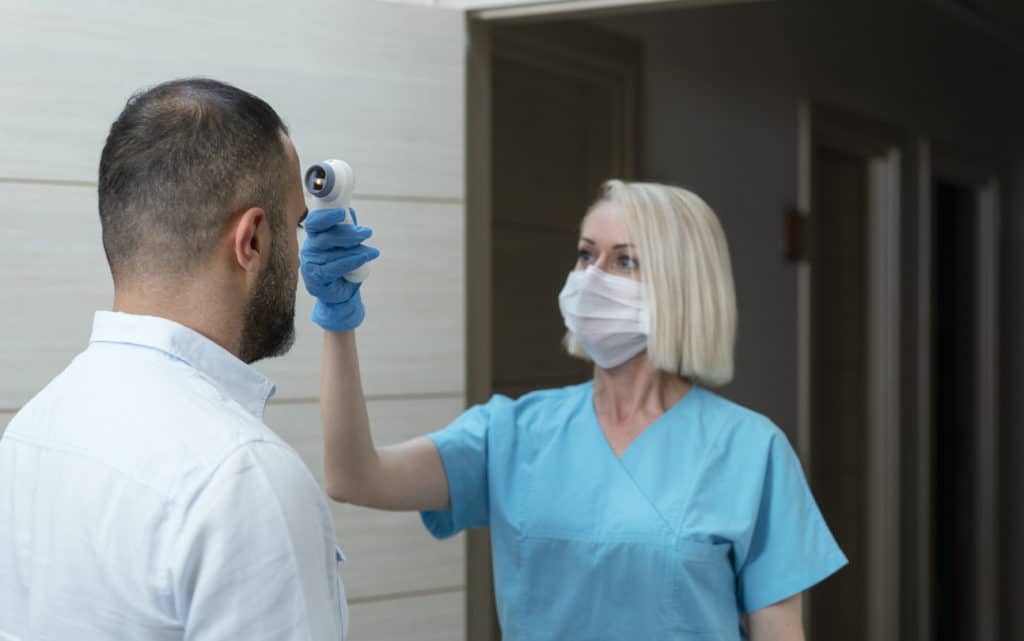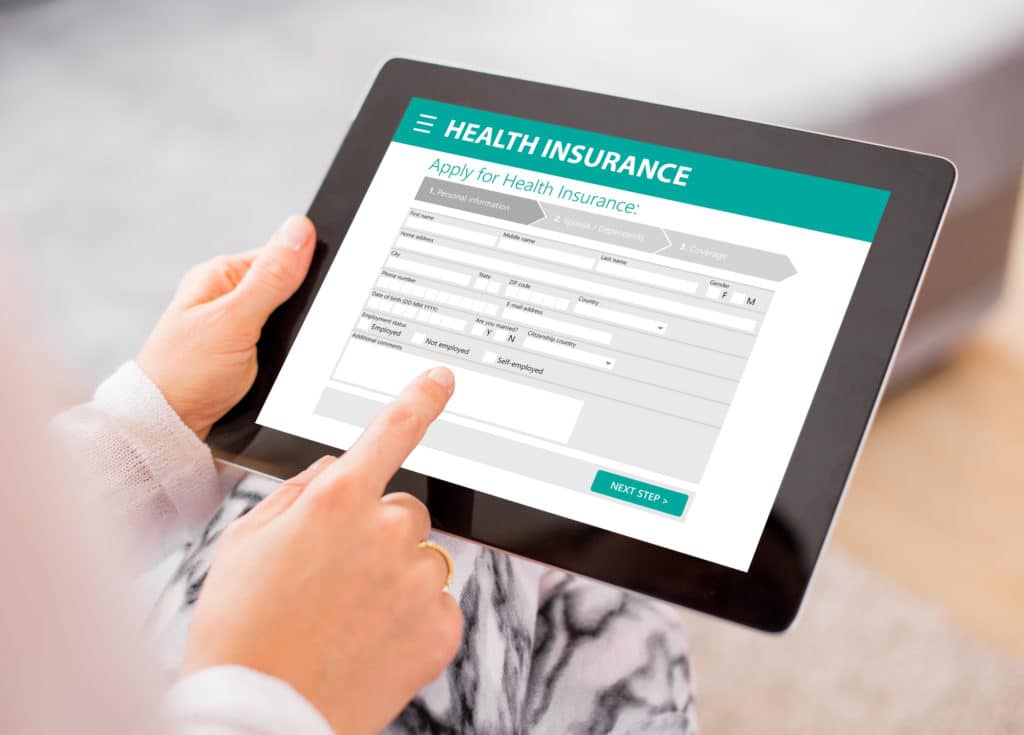If you are one of the 30 million people who recently filed an unemployment claim, you may be wondering what you’re going to do about your health insurance. While some measures passed in the recent emergency stimulus packages will provide a bit of financial relief, a huge number of Americans will be without income — and stable health coverage. Even before COVID-19, there were already millions of people living without health insurance.
The importance of understanding your health insurance options
The COVID-19 pandemic means it’s more important than ever to have some level of health coverage. Thankfully, due to recently-passed legislation, testing for the virus is now free for all Americans, with or without insurance. But, the cost and coverage of treatment for COVID-19 is a different story.
If you end up needing hospital care and are uninsured, you could be responsible for an enormous bill. To estimate COVID-19 treatment costs, a study by Kaiser Family Foundation (KFF) looked at hospital stays for pneumonia. Researchers found that the average total cost for one stay was around $10,000 for patients who had no complications. That amount jumped to $20,000 for patients who experienced major complications.
If you’re recently unemployed, health insurance is available
If you are uninsured, or are losing your insurance due to recent unemployment, you do have options to regain health coverage. Depending on your financial situation, only certain options may be affordable. But any level of coverage will help protect you and your wallet down the line.
Sign up for individual or family coverage through a health insurance exchange

State health insurance exchanges are where you can directly buy family and individual health insurance plans. If you experience a qualifying life event, such as losing employer-sponsored health insurance or student health insurance, you can shop for health plans through your state’s insurance marketplace. You have 30 to 60 days to sign up after a qualifying life event before the special enrollment period closes.
There is a period every year called open enrollment, during which anyone can shop for health coverage or change their plan. Open enrollment typically runs from November to January, depending on your state. But due to COVID-19, certain states temporarily reopened their enrollment period.
Only states that operate their own health exchange have the authority to reopen the enrollment period. Most states operate through the federal marketplace at Healthcare.gov. If you live in one of these states, federal legislation will determine whether or not you have a new opportunity to enroll.

Currently, California is the only state where a COVID-19 special enrollment period is still open. If you are a California resident, you can enroll through Covered California by June 30.
Health plans must offer a minimum set of essential health benefits, and they have tiered pricing based on the level of coverage they provide. Through your health insurance exchange, there are subsidies you can apply for depending on your income. This handy tool from KFF will calculate an estimate of premiums and subsidies based on your income, age, and family size. It will also estimate your eligibility for Medicaid.
Check if you qualify for Medicaid or CHIP
Unlike state health insurance exchanges, there is no enrollment period for Medicaid or CHIP — as long as you’re eligible, you can sign up at any time. When you enroll in insurance through state exchange programs, many of them will tell you whether or not you are eligible for Medicaid. Or, you can apply for Medicaid through your states’ Medicaid offices. This website provides links to each states’ Medicaid website.
In the 36 states that expanded Medicaid, you will qualify for Medicaid based on your income alone. In these states, you will qualify if you make less than 133% of the federal poverty level. In other states, you will qualify if you make less and are also pregnant, elderly, disabled, or a caretaker of a child.
For more information on qualification requirements, check out this guide.
If you are enrolled in Medicaid or CHIP, COVID-19 testing services will be covered. Under the Families First Coronavirus Response Act, Medicaid and CHIP are required to cover COVID-19 testing at no cost. This includes the cost of the test itself and the visit to the physician office, clinic, or hospital where the test was administered.
COBRA Coverage

If you recently lost your employer-sponsored health insurance, you are eligible for coverage through the Consolidated Omnibus Budget Reconciliation Act (COBRA). COBRA gives you an option to continue the same health insurance coverage you had under your employer, but you will be responsible for the costs your employer used to cover. It can last for up to 18 to 36 months.
Unfortunately, COBRA coverage is typically very expensive. Your cost will be whatever premiums your employer was paying for your health plan, along with an added 2% fee. And premiums are anything but cheap. A KFF survey found that annual premiums for employer-sponsored family health coverage was around $20,000 in 2019.
Add yourself to your family’s or spouse’s insurance plan
This option will only apply to some, but you may be able to get coverage through your spouse’s or family’s insurance plan. If you lost your job and health insurance, that qualifying life event might allow them to add you to their health insurance as a dependent. If you’re looking to enroll in your family’s insurance plan, you can receive coverage under it until you’re 26.
Use community care and hospital charity care programs
If you have to receive emergency care and you don’t have health insurance, remember that some hospitals do have charity care programs for those that can’t afford the cost of treatment.
If you have minor illnesses to treat, some community health centers will provide free- or low-cost care through collaboration with the Health Resources and Services Administration (HRSA). This tool can help you find HRSA funded health centers.
More legislation in the works

As congress continues to pass stimulus packages that address the public health emergency of COVID-10, the cost of care for you and your family for coronavirus related treatment may change. You can check this post regularly for the most up-to-date information.
How to save when you don’t have insurance
If paying for health insurance is simply not an option for you at this time, consider these options to lower the cost of healthcare:
- Shop around: The cost of services can vary from one doctors’ office to the next. If the care you need is not urgent, ask your healthcare provider what the anticipated cost is before you schedule an appointment. Ask if the cost is the same for all members of the practice. For example, the charge for a physical performed by a physician may be higher than if conducted by a nurse practitioner. If you’re open to changing providers, you can also explore pricing with other practices in your area.
- Ask about payment options: When asking about pricing, ask if the practice offers discounts. Some healthcare providers will offer a discount when paying in cash and/or paying in full at the time of service. They may also offer interest-free payment plans if you’re unable to pay for the healthcare you need.
- Use telemedicine services: Options like the GoodRx Telehealth Marketplace can help set you up with a phone or video visit with a healthcare provider. Depending on what type of care you’re seeking, these services typically start at $20 — and you don’t need to have insurance to use them.
- Buy in bulk: If you take medication on a regular basis, check with your pharmacy to see if buying a 90-day supply is cheaper per dose than refilling every 30 days. Along with saving your time and gas on a trip to the pharmacy, you may be able to trim the cost of the medicine.
- Use GoodRx coupons: GoodRx offers free coupons you can print, or download digitally, and take to participating pharmacies. These can drastically lower the price of everything from cholesterol and blood pressure medicines to antibiotics, to drugs that treat depression and more. For instance, 30 tablets of 100 mg sertraline (the generic for Zoloft) are as low as $6.52 with the coupon.
- Set up a savings account for healthcare costs: Open a savings account to stash extra cash earmarked only for medical costs. While it may be tempting to dip into this account for a vacation or credit card payment, make sure to only use the funds when you have a medical expense.
This article originally appeared on GoodRx.com

Lauren Chase
Research team at GoodRx


